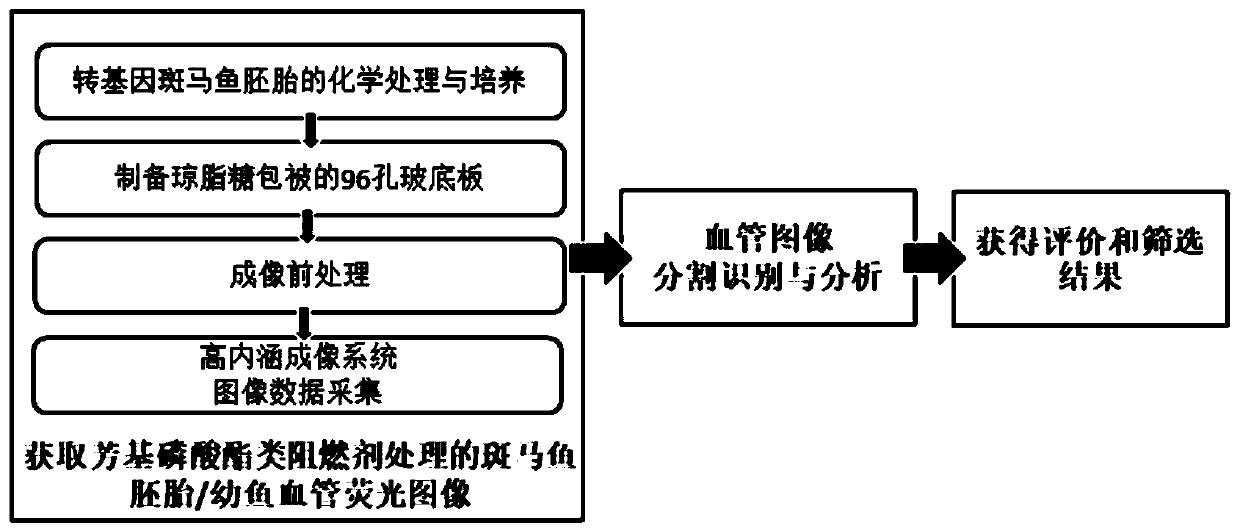Method for evaluating vascular toxicity of aryl phosphate flame retardant based on high-content imaging system
An aryl phosphoric acid and imaging system technology, applied in image enhancement, image analysis, fluorescence/phosphorescence, etc., can solve problems such as low efficiency, low throughput, and limited information acquisition
- Summary
- Abstract
- Description
- Claims
- Application Information
AI Technical Summary
Problems solved by technology
Method used
Image
Examples
Embodiment 1
[0083] Aryl phosphate flame retardants--triphenylphosphate (Triphenylphosphate, TPhP) vascular toxicity evaluation (process as follows figure 1 ):
[0084] 1. Acquisition of fluorescent images of blood vessels in zebrafish embryos / larvae treated with triphenyl phosphate
[0085] 1. Chemical treatment and culture of transgenic zebrafish embryos:
[0086] Prepare 21 pre-washed and sterilized 60mm glass dishes, randomly place 25 Tg(kdrl:EGFP) transgenic zebrafish embryos in the glass dishes, set 3 parallel dishes for each dose group, each dish contains 10ml fish water .
[0087] Zebrafish embryos were infected with TPhP at 7 doses of 0, 30, 100, 300, 600, 1200, 2400ug / L within 2 hours of fertilization (2hpf).
[0088] In a constant temperature light incubator at 28°C, light / dark: 14 / 10h cycle culture to 72hpf. Change the water every 24 hours and add 200uL 50XPTU (N-phenylthiourea) to each dish from 24hpf to inhibit the pigment production of zebrafish.
[0089] 2. Prepare aga...
PUM
 Login to View More
Login to View More Abstract
Description
Claims
Application Information
 Login to View More
Login to View More - R&D
- Intellectual Property
- Life Sciences
- Materials
- Tech Scout
- Unparalleled Data Quality
- Higher Quality Content
- 60% Fewer Hallucinations
Browse by: Latest US Patents, China's latest patents, Technical Efficacy Thesaurus, Application Domain, Technology Topic, Popular Technical Reports.
© 2025 PatSnap. All rights reserved.Legal|Privacy policy|Modern Slavery Act Transparency Statement|Sitemap|About US| Contact US: help@patsnap.com



